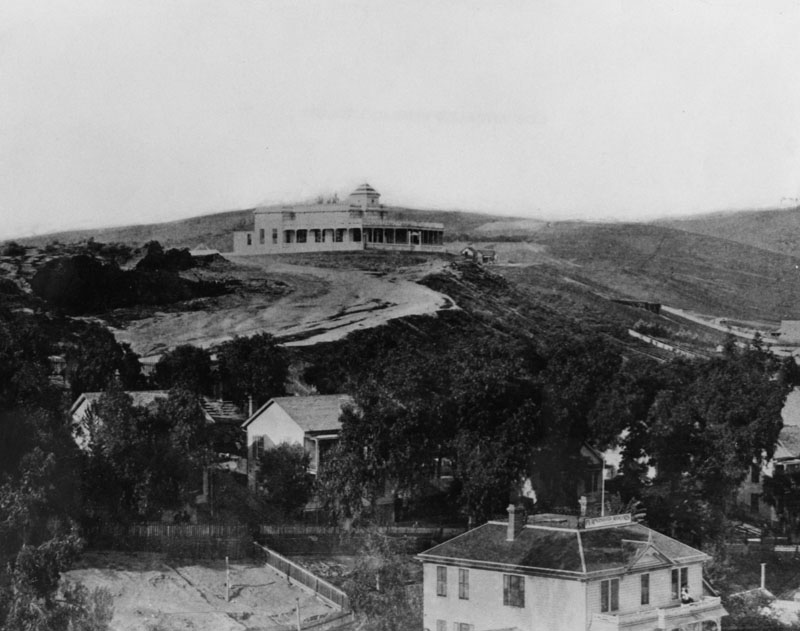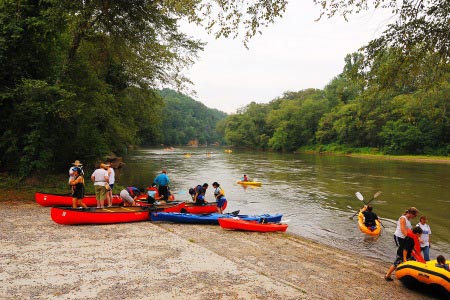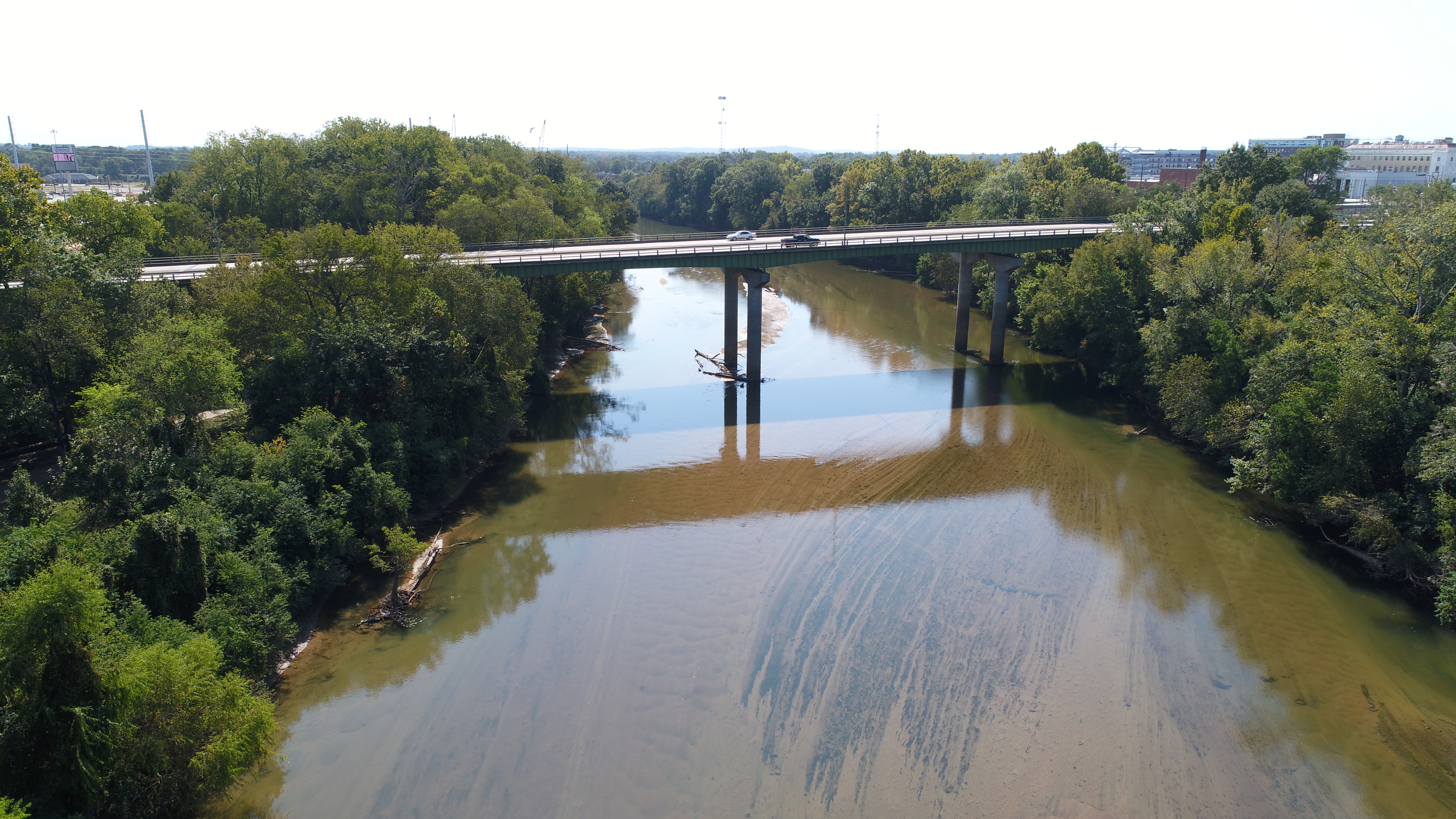|
Yuchi Town Site
Yuchi Town Site, or Yuchi Town, is a late prehistoric and historic era archaeological site showing occupation of both the Apalachicola and of Yuchi tribes. The site is located in a remote area of Fort Moore (formerly Fort Benning), Russell County, Alabama. The Yuchi Town Site is an example of historic Native American cultures adopting various strategies to maintain their cultural integrity in the face of European colonization and the expansion of the United States. It was declared a National Historic Landmark in 1996. History The site was initially an Apalachicola village, indicated by graves, aboriginal pottery, trade beads, and other items. This phase of occupation is believed to date from 1650-1715, a time when Spanish influence in the region was present. At this time the Spanish established a short-lived mission at the village of Sabacola and maintained a garrison of troops at the town of Apalachicola. The Apalachicola allied with the Spanish in Florida durin ... [...More Info...] [...Related Items...] OR: [Wikipedia] [Google] [Baidu] |
Fort Moore
Fort Moore was the second of two historic U.S. Military Forts in Los Angeles, California, during the Mexican–American War. It lay straight above the junction of the Hollywood Freeway and Broadway, on an historic hill that once sheltered the old Plaza. The landmark hill took its name, Fort Hill, from the first fort, and the hill afforded sweeping views of the old adobe town and the vineyards in the swale of the Los Angeles River. Fort Hill was a spur of the ridge that runs from the Quarry Hills (Elysian Park) southward to Beaudry’s Bunker Hill; it originally stretched east between 1st Street and Ord Street. In old photographs, it forms a backdrop just behind the Plaza Church and square. By 1949, what was left of the hill under the fort was cut down when the Hollywood Freeway was put through.However, not all the hill was bulldozed, but some of it has been left west of Hill Street and north of the freeway, although at a fraction of its former height. The fort is now mem ... [...More Info...] [...Related Items...] OR: [Wikipedia] [Google] [Baidu] |
Carolinas
The Carolinas are the U.S. states of North Carolina and South Carolina, considered collectively. They are bordered by Virginia to the north, Tennessee to the west, and Georgia to the southwest. The Atlantic Ocean is to the east. Combining North Carolina's population of 10,439,388 and South Carolina's of 5,118,425, the Carolinas have a collective population of 15,557,813 as of 2020. If the Carolinas were a single state of the United States, it would be the fifth-most populous state, behind California, Texas, Florida, and New York. The Carolinas were known as the Province of Carolina during America's early colonial period, from 1663 to 1710. Prior to that, the land was considered part of the Colony and Dominion of Virginia, from 1609 to 1663. The province, named ''Carolina'' to honor King Charles I of England, was divided into two royal colonies in 1729, although the actual date is the subject of debate. History The region was claimed as part of the Spanish territory named '' L ... [...More Info...] [...Related Items...] OR: [Wikipedia] [Google] [Baidu] |
Native American History Of Alabama
Native may refer to: People * Jus soli, citizenship by right of birth * Indigenous peoples, peoples with a set of specific rights based on their historical ties to a particular territory ** Native Americans (other) In arts and entertainment * Native (band), a French R&B band * Native (comics), a character in the X-Men comics universe * ''Native'' (album), a 2013 album by OneRepublic * ''Native'' (2016 film), a British science fiction film * ''The Native'', a Nigerian music magazine In science * Native (computing), software or data formats supported by a certain system * Native language, the language(s) a person has learned from birth * Native metal, any metal that is found in its metallic form, either pure or as an alloy, in nature * Native species, a species whose presence in a region is the result of only natural processes Other uses * Northeast Arizona Technological Institute of Vocational Education (NATIVE), a technology school district in the Arizona portion of ... [...More Info...] [...Related Items...] OR: [Wikipedia] [Google] [Baidu] |
National Historic Landmarks In Alabama
The National Historic Landmarks in Alabama represent Alabama's history from the precolonial era, through the Civil War, the Civil Rights Movement, and the Space Age. There are 39 National Historic Landmarks (NHLs) in Alabama, which are located in 18 of the state's 67 counties. Five of the NHLs in the state have military significance, eight are significant examples of a particular architectural style, six are archaeological sites, seven played a role in the African American struggle for civil rights, and five are associated with the development of the U.S. Space Program. One site in Alabama was designated a NHL, but the designation was subsequently removed. The National Historic Landmark program is administered by the National Park Service, a branch of the Department of the Interior. The National Park Service determines which properties meet NHL criteria and makes nomination recommendations after an owner notification process. The Secretary of the Interior reviews nominations ... [...More Info...] [...Related Items...] OR: [Wikipedia] [Google] [Baidu] |
Archaeological Sites On The National Register Of Historic Places In Alabama
Archaeology or archeology is the scientific study of human activity through the recovery and analysis of material culture. The archaeological record consists of artifacts, architecture, biofacts or ecofacts, sites, and cultural landscapes. Archaeology can be considered both a social science and a branch of the humanities. It is usually considered an independent academic discipline, but may also be classified as part of anthropology (in North America – the four-field approach), history or geography. Archaeologists study human prehistory and history, from the development of the first stone tools at Lomekwi in East Africa 3.3 million years ago up until recent decades. Archaeology is distinct from palaeontology, which is the study of fossil remains. Archaeology is particularly important for learning about prehistoric societies, for which, by definition, there are no written records. Prehistory includes over 99% of the human past, from the Paleolithic until the adve ... [...More Info...] [...Related Items...] OR: [Wikipedia] [Google] [Baidu] |
Archaeological Sites In Alabama
Archaeology or archeology is the scientific study of human activity through the recovery and analysis of material culture. The archaeological record consists of artifacts, architecture, biofacts or ecofacts, sites, and cultural landscapes. Archaeology can be considered both a social science and a branch of the humanities. It is usually considered an independent academic discipline, but may also be classified as part of anthropology (in North America – the four-field approach), history or geography. Archaeologists study human prehistory and history, from the development of the first stone tools at Lomekwi in East Africa 3.3 million years ago up until recent decades. Archaeology is distinct from palaeontology, which is the study of fossil remains. Archaeology is particularly important for learning about prehistoric societies, for which, by definition, there are no written records. Prehistory includes over 99% of the human past, from the Paleolithic until the adve ... [...More Info...] [...Related Items...] OR: [Wikipedia] [Google] [Baidu] |
National Register Of Historic Places In Russell County, Alabama
__NOTOC__ This is a list of the National Register of Historic Places listings in Russell County, Alabama. This is intended to be a complete list of the properties and districts on the National Register of Historic Places in Russell County, Alabama, United States. Latitude and longitude coordinates are provided for many National Register properties and districts; these locations may be seen together in an online map. There are 25 properties and districts listed on the National Register in the county, including 3 National Historic Landmarks. Current listings See also * List of National Historic Landmarks in Alabama * National Register of Historic Places listings in Alabama References {{Russell County, Alabama Russell Russell may refer to: People * Russell (given name) * Russell (surname) * Lady Russell (other) * Lord Russell (other) Places Australia *Russell, Australian Capital Territory *Russell Island, Queenslan ... [...More Info...] [...Related Items...] OR: [Wikipedia] [Google] [Baidu] |
List Of National Historic Landmarks In Alabama
The National Historic Landmarks in Alabama represent Alabama's history from the precolonial era, through the Civil War, the Civil Rights Movement, and the Space Age. There are 39 National Historic Landmarks (NHLs) in Alabama, which are located in 18 of the state's 67 counties. Five of the NHLs in the state have military significance, eight are significant examples of a particular architectural style, six are archaeological sites, seven played a role in the African American struggle for civil rights, and five are associated with the development of the U.S. Space Program. One site in Alabama was designated a NHL, but the designation was subsequently removed. The National Historic Landmark program is administered by the National Park Service, a branch of the Department of the Interior. The National Park Service determines which properties meet NHL criteria and makes nomination recommendations after an owner notification process. The Secretary of the Interior reviews nomination ... [...More Info...] [...Related Items...] OR: [Wikipedia] [Google] [Baidu] |
Chattahoochee River
The Chattahoochee River forms the southern half of the Alabama and Georgia border, as well as a portion of the Florida - Georgia border. It is a tributary of the Apalachicola River, a relatively short river formed by the confluence of the Chattahoochee and Flint Flint, occasionally flintstone, is a sedimentary cryptocrystalline form of the mineral quartz, categorized as the variety of chert that occurs in chalk or marly limestone. Flint was widely used historically to make stone tools and start fir ... rivers and emptying from Florida into Apalachicola Bay in the Gulf of Mexico. The Chattahoochee River is about long. The Chattahoochee, Flint, and Apalachicola rivers together make up the Apalachicola–Chattahoochee–Flint River Basin (ACF River Basin). The Chattahoochee makes up the largest part of the ACF's drainage basin. Course The River source, source of the Chattahoochee River is located in Jacks Gap at the southeastern foot of Jacks Knob, in the very southeaste ... [...More Info...] [...Related Items...] OR: [Wikipedia] [Google] [Baidu] |
Ocmulgee River
The Ocmulgee River () is a western tributary of the Altamaha River, approximately 255 mi (410 km) long, in the U.S. state of Georgia (U.S. state), Georgia. It is the westernmost major tributary of the Altamaha.Ocmulgee River ''New Georgia Encyclopedia'' (August 9, 2004). It was formerly known by its Hitchiti name of Ocheese Creek, from which the Muscogee, Creek (Muscogee) people derived their name. The Ocmulgee River and its tributaries provide drainage for some 6,180 square miles in parts of List of counties in Georgia, 33 Georgia counties, a large section of the Piedmont (United States), Piedmont and coastal plain of central Georgia. The Ocmulgee River Drainage basin, basin has three river subbasins designated by the United States Geological Survey, U.S. Geological Su ... [...More Info...] [...Related Items...] OR: [Wikipedia] [Google] [Baidu] |
Cherokee
The Cherokee (; chr, ᎠᏂᏴᏫᏯᎢ, translit=Aniyvwiyaʔi or Anigiduwagi, or chr, ᏣᎳᎩ, links=no, translit=Tsalagi) are one of the indigenous peoples of the Southeastern Woodlands of the United States. Prior to the 18th century, they were concentrated in their homelands, in towns along river valleys of what is now southwestern North Carolina, southeastern Tennessee, edges of western South Carolina, northern Georgia, and northeastern Alabama. The Cherokee language is part of the Iroquoian language group. In the 19th century, James Mooney, an early American ethnographer, recorded one oral tradition that told of the tribe having migrated south in ancient times from the Great Lakes region, where other Iroquoian peoples have been based. However, anthropologist Thomas R. Whyte, writing in 2007, dated the split among the peoples as occurring earlier. He believes that the origin of the proto-Iroquoian language was likely the Appalachian region, and the split betw ... [...More Info...] [...Related Items...] OR: [Wikipedia] [Google] [Baidu] |
Savannah River
The Savannah River is a major river in the southeastern United States, forming most of the border between the states of South Carolina and Georgia. Two tributaries of the Savannah, the Tugaloo River and the Chattooga River, form the northernmost part of the border. The Savannah River drainage basin extends into the southeastern side of the Appalachian Mountains just inside North Carolina, bounded by the Eastern Continental Divide. The river is around long.U.S. Geological Survey. National Hydrography Dataset high-resolution flowline dataThe National Map, accessed April 26, 2011 The Savannah was formed by the confluence of the Tugaloo River and the Seneca River. Today this confluence is submerged beneath Lake Hartwell. The Tallulah Gorge is located on the Tallulah River, a tributary of the Tugaloo River that forms the northwest branch of the Savannah River. Two major cities are located along the Savannah River: Savannah and Augusta, Georgia. They were nuclei of early Eng ... [...More Info...] [...Related Items...] OR: [Wikipedia] [Google] [Baidu] |



.jpg)


